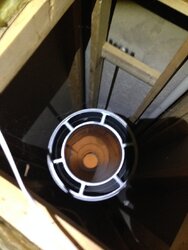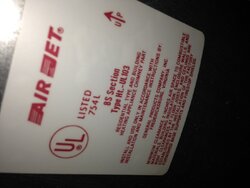Hi folks,
Around 15 years ago when designing our modular home, one of the options was to have a pre-fab flue added in to the home, which we did. Now, 15 years later we are just getting around to finishing off the flue. It currently runs from our basement up to the attic crawl space.
What is there seems to be an un-insulated triple wall pipe. The inside pipe diameter is 8" & the outside is just over 12". In the basement, there is a "box" that is nailed in to the floor joists and this is where it seems that the pipe is resting.
My question, is this triple wall, and what can I get to connect to it to continue the run from the attic through the roof? Here is a photo from the attic looking down.
Around 15 years ago when designing our modular home, one of the options was to have a pre-fab flue added in to the home, which we did. Now, 15 years later we are just getting around to finishing off the flue. It currently runs from our basement up to the attic crawl space.
What is there seems to be an un-insulated triple wall pipe. The inside pipe diameter is 8" & the outside is just over 12". In the basement, there is a "box" that is nailed in to the floor joists and this is where it seems that the pipe is resting.
My question, is this triple wall, and what can I get to connect to it to continue the run from the attic through the roof? Here is a photo from the attic looking down.




